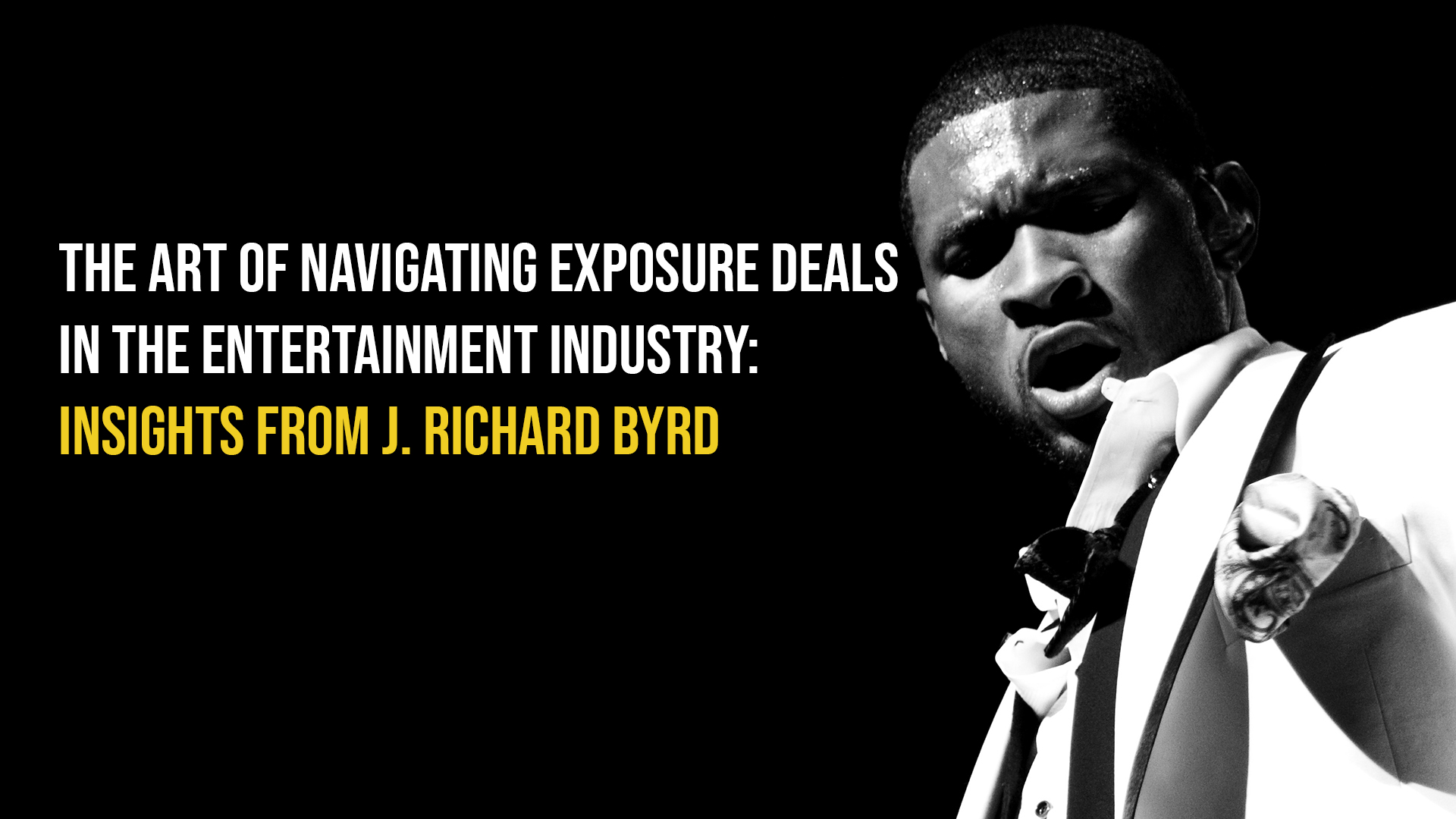The Art of Navigating Exposure Deals in the Entertainment Industry: Insights from J. Richard Byrd
The entertainment world is abuzz with Usher's Super Bowl halftime show performance, a spectacle that reportedly earned him a mere $671, despite Apple shelling out $50 million for the slot. This situation resurrects the perennial debate in the entertainment business sectors: the value of exposure versus monetary compensation.
With over 25 years of experience in the entertainment industry, including pivotal roles at a law firm specializing in these exact dilemmas, I've navigated the treacherous waters of exposure deals often. Here, I share my insights on how to maximize exposure for your clients without selling them short.
1. Strategy Is Key
Entering into exposure events without a clear strategy is akin to sailing without a compass. You might catch the wind, but where are you going? Every appearance, every performance, and every interview must serve a larger purpose.
Whether it's to introduce your client to a new demographic, to solidify their brand identity, or to pave the way for a major project release, the strategy should dictate the direction. An exposure event without a strategic foundation is an opportunity missed.
2. Define the Final Goal
Clarity about what you aim to achieve is crucial. Is the goal to increase streaming numbers? To boost ticket sales for an upcoming tour? Or perhaps to cultivate partnerships with brands? Being clear about the final goal of the event ensures that you can tailor your approach to meet these objectives, making the exposure meaningful and directed.
3. Prepare to Capture the Momentum
Exposure is a spark that, if not tended to, will quickly die out. Having a team or a funnel in place to capture and maximize the results of the exposure is vital. This could mean having a marketing team ready to launch a campaign that aligns with the exposure event, or a sales strategy that leverages the increased visibility.
It's about converting viewers, listeners, and casual fans into loyal followers and customers. Without a system to channel the momentum gained from exposure, the energy dissipates, unutilized.
4. Measure and Analyze
The bonus step, yet no less critical, is measurement. How do you know if the exposure was worth it? By setting measurable objectives beforehand and analyzing the results afterward. This could range from social media engagement metrics to sales and streaming numbers, to mentions in the press. Measuring the impact allows you to evaluate the success of the exposure event and provides valuable insights for future endeavors.
Final Thoughts
The case of Usher's Super Bowl halftime show performance serves as a reminder of the complexities surrounding exposure deals in the entertainment industry. While the allure of widespread visibility is undeniable, it's the strategic, goal-oriented, and measured approach that ultimately translates exposure into tangible success.
In my 25+ years in the entertainment sector, I've learned that exposure, when harnessed correctly, can be a powerful tool. However, it should never be the end goal but rather a means to an end.
By following these guidelines, artists and their teams can ensure that they're not just chasing the spotlight but leveraging it to build lasting legacies in the industry.
photo cred: By Seher Sikandar https://www.flickr.com/photos/rehes/3065341576/in/set-72157610263716195/, CC BY-SA 3.0, https://commons.wikimedia.org/w/index.php?curid=7481569

